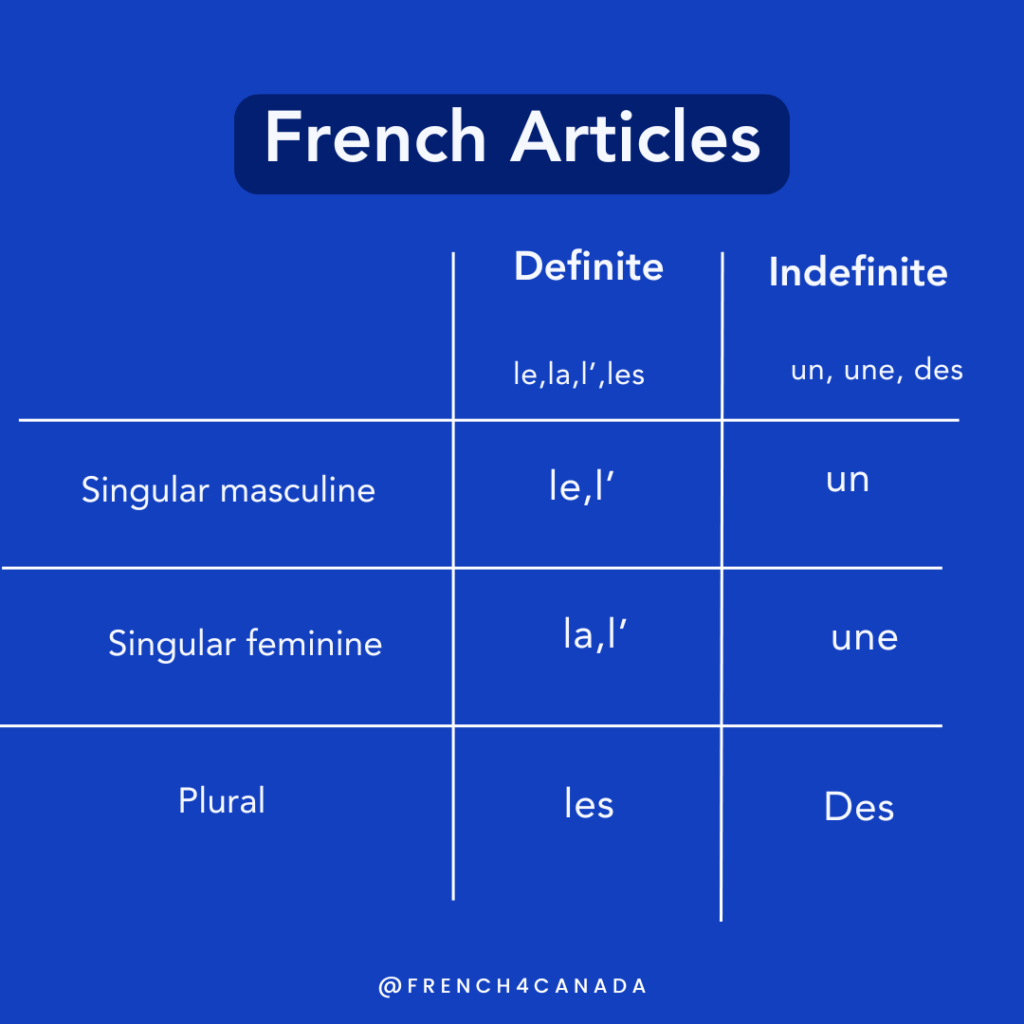
Definite articles(le,la,l’,les)
In French, definite articles are used to talk about specific nouns, either because they are known to both the speaker and listener or because they have been previously mentioned. These articles are equivalent to “the” in English. There are four forms of the definite article, depending on the gender (masculine or feminine), number (singular or plural), and the first letter of the noun.
French Form | Usage | Example | English Equivalent |
| le | Singular masculine | le chat (the cat) | the (masculine, singular) |
| la | Singular feminine | la table (the table) | the (feminine, singular) |
| l’ | Singular (before vowels or silent h) | l’école (the school) | the (singular, before a vowel or silent “h”) |
| les | Plural (both masculine and feminine) | les enfants (the children) | the (plural, both masculine and feminine) |
Exceptions and Important Points:
- Before a vowel sound or silent “h”, use l’ instead of le or la:
- l’homme (the man)
- l’ami (the friend)
- Plural Definite Article “les”: “Les” is used for both masculine and feminine plural nouns
- Les enfants (the children)
- Les filles (the girls)
- Countries and cities:
- Some countries take le, la, or les based on their names and gender.
- La France, Le Japon, Les États-Unis.
Indefinite articles (un, une, des)
Indefinite articles in French are un, une, and des. These correspond to “a,” “an,” or “some” in English, depending on whether the noun is masculine, feminine, or plural. Here’s how they work:
| French Form | Usage | Example |
| Un | Masculine singular nouns | Un livre (A book) |
| Une | Feminine singular nouns | Une pomme (an apple) |
| Des | Plural nouns (for both masculine and feminine) | des fleurs (some flowers) |